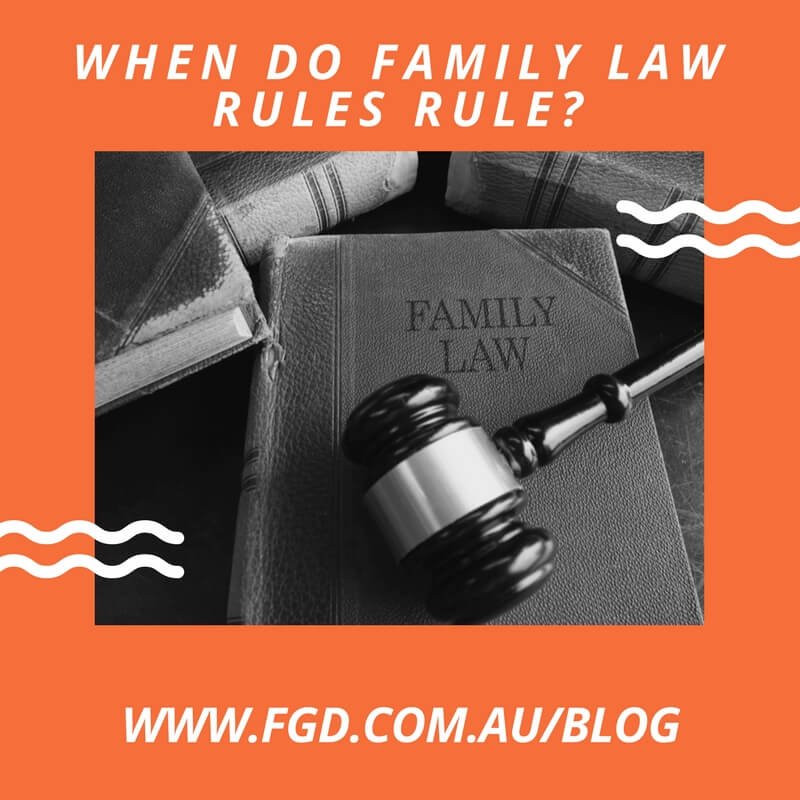
Australian family law cases are decided in both the Family Court of Australia and the Federal Circuit Court of Australia. About 90% of family law cases are decided in the Federal Circuit Court of Australia. Longer and more complex cases are dealt with by the family Court of Australia. The Family Law Rules 2004 (Cth) apply to proceedings in the Family Court of Australia. The purpose of the Family Law Rules is to “ensure that each case is resolved in a just and timely manner at a cost to the parties and the court that is reasonable in the circumstances of the case.”
The Federal Circuit Court Rules 2001 (Cth) apply to proceedings in the Federal Circuit Court of Australia. The object of the Federal Circuit Court Rules is to “assist the just, efficient and economical resolution of proceedings.”
To keep everyone on their toes, a handful of the Family Law Rules also apply in the Federal Circuit Court of Australia. The power in both the Family Law Rules and the Federal Circuit Court Rules to prospectively or retrospectively dispense with compliance with the rules also keeps things interesting for family law litigants and their lawyers.
The differing procedures relating to disclosure in each of the Courts is exemplary of the headaches that can be caused by the two sets of rules.
Disclosure is the compulsory process by which each of the parties to a piece of litigation produce copies of relevant documents to the other parties. Disclosure ensures that all material that is relevant to the determination of the dispute is put before the Judge who is deciding the case.
The Family Law Rules provide that each party has a duty to “give full and frank disclosure of all information relevant to the case, in a timely manner.” The Federal Circuit Court Rules provide that interrogatories and discovery “are not allowed in relation to a proceeding unless the Court or a Judge declares that it is appropriate in the interests of the administration of justice.”
Further complications arise when cases are transferred between the Courts, a not uncommon occurrence. The conflicting rules generally can lead to unnecessary arguments between lawyers and confusion for clients, and therefore more expenses and stress for family law litigants in what is already an expensive and stressful process.
The solution to these difficulties is simple – there should be one set of court rules for all proceedings under the Family Law Act 1975 (Cth) , and thus, to quote an early 20th century Judge quoting an early 19th century poet, “to heavenliest harmony reduce the seeming chaos.” As a member of the Law Council of Australia’s Family Law Section, I pushed this barrow for a while but with no success. After 18 years I retired from that role. No doubt the current Executive will carry on this issue.
This post was originally published on 11 August 2014 and has been updated as at 20 July 2017
Denis Farrar is a Family Lawyer and Director at Farrar Gesini Dunn, Canberra Office